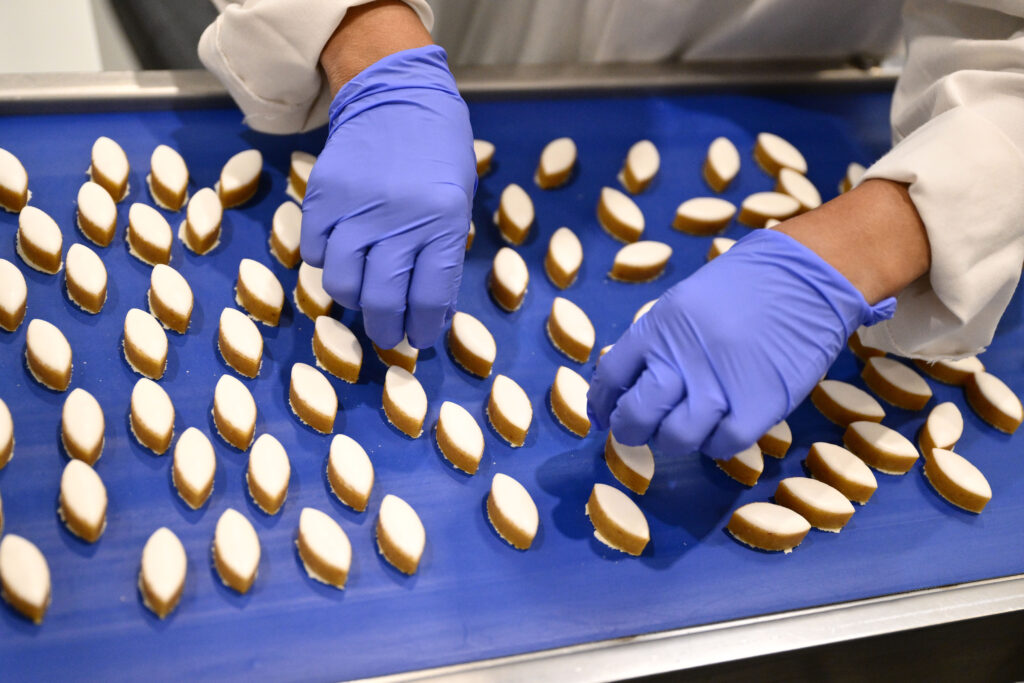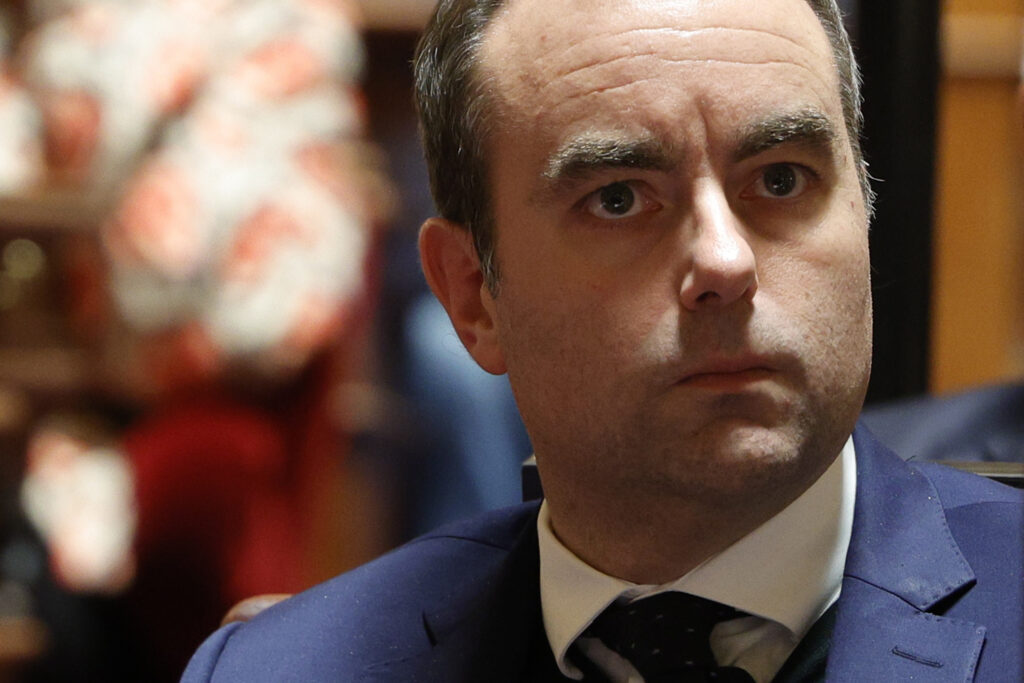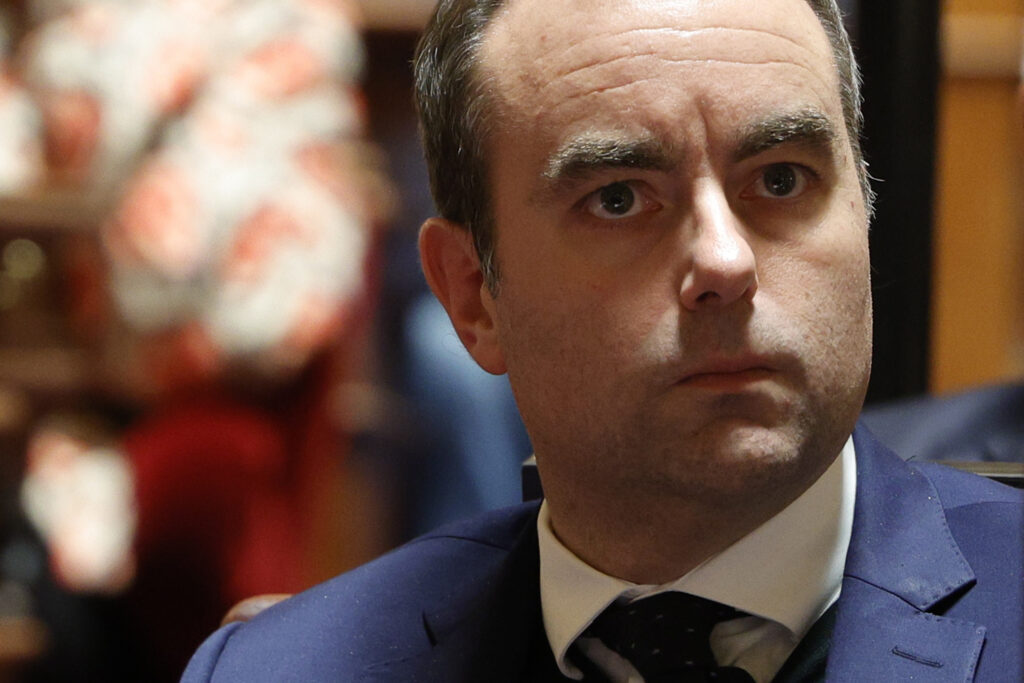Problème de logiciel: moins de 100 avions A320 restent immobilisés, annonce Airbus
Moins de 100 Airbus de la gamme A320 restent immobilisés en raison d’un logiciel de commandes vulnérable, sur les quelque 6.000 appareils potentiellement concernés, a annoncé lundi le constructeur aéronautique.”La très grande majorité” de ces appareils a été modifiée depuis l’annonce de ce problème vendredi, a précisé Airbus dans un communiqué, en disant œuvrer avec les compagnies aériennes à “la modification de moins de 100 appareils restants pour s’assurer qu’ils peuvent être remis en service”.Le géant industriel européen avait annoncé vendredi soir un rappel concernant son monocouloir à succès pour remplacer de toute urgence un logiciel de commande vulnérable aux radiations solaires, après un incident fin octobre aux États-Unis.Un vol de la compagnie américaine JetBlue reliant Cancun au Mexique à Newark près de New York avait dû se poser en urgence à Tampa, en Floride, après avoir brutalement piqué vers le bas.Airbus, qui avait exhorté vendredi ses clients à “arrêter immédiatement les vols” d’environ 6.000 appareils concernés, a pu rapidement intervenir sur des milliers d’aéronefs vendredi et samedi, atténuant les craintes de perturbations de grande ampleur sur le trafic aérien mondial.EasyJet, l’un des plus gros exploitants de la gamme A320, a indiqué lundi avoir réussi à mettre à jour l’avionique de tous ses appareils concernés “sans perturbation de notre programme de vols” pendant le week-end. L’ultra low-cost Wizz Air a également signalé lundi n’avoir dû effectuer “aucune annulation de vol” lors du processus, qui est terminé pour l’ensemble de sa flotte affectée.L’A320, dans ses nombreuses variantes, est l’appareil commercial civil le plus vendu au monde. Entré en exploitation en 1988, il avait été livré fin septembre à 12.257 exemplaires.Le chiffre d’une centaine d’A320 restant à modifier avait été évoqué dès samedi matin par le ministre français des Transports, Philippe Tabarot, mais Airbus ne l’avait pas jusqu’alors confirmé.Lundi, le constructeur a renouvelé ses excuses “pour les difficultés et les retards occasionnés aux passagers et aux compagnies” par cette situation, en les remerciant de “leur compréhension vis-à-vis d’une décision de donner la priorité absolue à la sécurité”.
‘As easy as making tea’: Latest Kohli masterclass dispels doubts
Virat Kohli dispelled any doubts about his enduring quality with the 50-over World Cup on the horizon after a match-winning century for India against South Africa.The 37-year-old struck 135 off 120 balls — his 52nd one-day international hundred — to guide the hosts to a 17-run win in the opening match of the three-game series in Ranchi on Sunday.Kohli, who now plays only the 50-over format after retiring from Tests and T20s, starred alongside fellow veteran Rohit Sharma, 38.Their futures have been widely debated, with chief selector Ajit Agarkar recently noting that it was rare for players to remain dominant while featuring in just one format of the game.But Kohli’s latest knock — his 83rd international century across formats — silenced any immediate doubts about his longevity.The batsman is targeting the ODI World Cup in 2027.”I don’t see any reason to talk about his future,” batting coach Sitanshu Kotak said. “It’s just the way he’s batting, it’s just brilliant… The way he’s performing, the way he maintains his fitness, there are no questions about anything.”Kohli shared a 136-run stand for the second wicket with Rohit, who hit 57 for his 60th ODI half-century, as India piled up 349-8. Kohli looked in especially imperious touch, hitting 11 fours and seven sixes in a fluent display.Questions about a possible Test comeback resurfaced after India’s recent 2-0 series loss to South Africa, but Kohli reiterated his commitment to the ODI format.”Yes, that’s how it’s always going to be,” he said. “I’m just playing one form of the game.”With 554 international matches under his belt, Kohli, popularly known as ‘King Kohli’ for his prolific run-scoring, said experience and mental sharpness guided his preparation now. “You know, I’ve never been a big believer of a lot of preparation, if that makes sense,” he said.”All my cricket has been mental. As long as I feel mentally I can play the game, I work physically very hard every day of my life.”It’s got nothing to do with cricket anymore. It’s the way I live.”Senior cricket journalist Ayaz Memon said the performance was a statement of intent from India’s senior duo. “Rohit and Kohli have served notice again that their ambition of playing the 2027 ODI World Cup is not misplaced,” he said in a social media post.Former opener Virender Sehwag said: “Virat Kohli has once again shown that making runs for him is as easy as we make tea. “Kohli is not chasing records, records are chasing Kohli. His hunger and passion remain the same today. King stays king!”
En Provence, champ libre pour l’essor de l’amande et de la pistache
Dans un atelier qui embaume la pâte d’amande, des employés enfournent des plateaux de calissons. La traditionnelle confiserie de Provence est de plus en plus fabriquée avec des amandes locales, dont la culture est relancée depuis une décennie.Dans le sillon de l’amande, la pistache s’implante aussi en Provence, en Occitanie et en Corse, encore timidement mais portée par la volonté des agriculteurs de se diversifier face aux difficultés économiques et au réchauffement climatique.Et si la Californie, géant mondial du secteur, inonde les marchés, les producteurs français mettent en avant conscience écologique et fierté de produits haut de gamme.Dans les ateliers du Roy René, confiserie d’Aix-en-Provence, 50 tonnes d’amandes françaises sont désormais utilisées pour certains produits phares: calissons traditionnels, nougats ou pralines.Quand la maison est rachetée en 2014 par l’entrepreneur Olivier Baussan, elle importe des amandes américaines et espagnoles, rappelle le responsable communication Alexis Bertucat. Rapidement germe l’idée de replanter des amandiers.D’une part pour “retrouver une tradition” remontant au 15e siècle. “Si on fait des calissons à Aix-en-Provence, c’est qu’il y avait des producteurs d’amandes tout autour”, poursuit M. Bertucat.Volonté aussi d’instaurer des circuits courts. “Si on prend des amandes plus proches de chez nous, on fait baisser l’impact carbone.”- “Respectueuse de l’environnement” -La France compte désormais plus de 2.700 hectares d’amandiers, selon des chiffres officiels. La production (fruit débarrassé de sa coque) est d’environ 1.200 tonnes explique à l’AFP le producteur François Moulias.Une récolte qui “continuera d’augmenter” mais restera “toujours faible au regard du marché”, reconnaît-il, évoquant des importations frôlant les 50.000 tonnes.”Avec nos pratiques agronomiques plus vertueuses, on ne peut pas avoir les rendements des Américains”, ajoute M. Moulias indiquant que l’amande française “consomme cinq fois moins d’eau” que la californienne.En 2018, il cofonde avec l’ancien ministre Arnaud Montebourg la Compagnie des Amandes, qui s’associe aux agriculteurs pour planter des amandiers sur leurs terrains. L’entreprise dispose aujourd’hui de 230 hectares de vergers “sur tout l’arc méditerranéen”: Bouches-du-Rhône, Vaucluse, Hérault et Aude.Une usine de transformation a été lancée en octobre. Elle approvisionne des artisans –chocolatiers, producteurs de nougat ou de macarons –comme Ladurée– et des grandes surfaces. Pour l’industrie cosmétique, les amandes se déclinent en poudre ou en huile.L’ambition: “Apporter au consommateur final une amande plus goûteuse, plus respectueuse de l’environnement et produite localement.”- “Résister aux sécheresses” -Dès 2011, Fabien Dauphin, producteur de cerises, s’est lancé dans l’amande comme “culture de diversification.”Il marche ainsi dans les pas de son arrière-grand-père, qui possédait des amandiers avant que le grand gel des années 1950 ne terrasse la filière.Aujourd’hui, M. Dauphin -président du syndicat des producteurs d’amande de Provence- possède 22 hectares à Cucuron. Ses amandes représentent la moitié de ses revenus, notamment grâce aux ventes en ligne, sur les marchés et dans des épiceries fines.”Ca reste un marché de niche. Nos clients sont souvent des gens à fort pouvoir d’achat”, reconnaît-il.Il réfléchit à se lancer dans la pistache. “C’est vraiment deux filières jumelles: on a besoin du même matériel et surtout, on a les mêmes clients.”Si la pistache française en est à ses débuts –550 hectares plantés, une récolte annuelle de 200 kilos–, dans un bassin méditerranéen enchaînant des records de canicule, la culture apparaît “fortement résiliente face au changement climatique”, explique Benoit Dufay, du Syndicat France Pistache.Le pistachier “résiste très bien aux sécheresses”, poursuit-il, même si pour garantir le rendement il faut “irriguer un minimum.”L’initiative a débuté en 2018 avec des agriculteurs et entrepreneurs locaux. La production s’oriente vers “un marché plutôt premium” valorisant un produit “100% français”.Mais pour des volumes conséquents il faudra attendre: les premières récoltes n’arrivent que six ans après avoir planté et les producteurs cherchent surtout une diversification, explique M. Dufay, dont le syndicat compte 130 adhérents.”Un vigneron qui diversifie, le but, ce n’est pas qu’il arrête totalement la vigne”, plaide-t-il. “Quand vous avez une culture qui ne se porte pas bien une année, vous avez la culture numéro deux qui permet d’assurer quand même un revenu.”
En Provence, champ libre pour l’essor de l’amande et de la pistache
Dans un atelier qui embaume la pâte d’amande, des employés enfournent des plateaux de calissons. La traditionnelle confiserie de Provence est de plus en plus fabriquée avec des amandes locales, dont la culture est relancée depuis une décennie.Dans le sillon de l’amande, la pistache s’implante aussi en Provence, en Occitanie et en Corse, encore timidement mais portée par la volonté des agriculteurs de se diversifier face aux difficultés économiques et au réchauffement climatique.Et si la Californie, géant mondial du secteur, inonde les marchés, les producteurs français mettent en avant conscience écologique et fierté de produits haut de gamme.Dans les ateliers du Roy René, confiserie d’Aix-en-Provence, 50 tonnes d’amandes françaises sont désormais utilisées pour certains produits phares: calissons traditionnels, nougats ou pralines.Quand la maison est rachetée en 2014 par l’entrepreneur Olivier Baussan, elle importe des amandes américaines et espagnoles, rappelle le responsable communication Alexis Bertucat. Rapidement germe l’idée de replanter des amandiers.D’une part pour “retrouver une tradition” remontant au 15e siècle. “Si on fait des calissons à Aix-en-Provence, c’est qu’il y avait des producteurs d’amandes tout autour”, poursuit M. Bertucat.Volonté aussi d’instaurer des circuits courts. “Si on prend des amandes plus proches de chez nous, on fait baisser l’impact carbone.”- “Respectueuse de l’environnement” -La France compte désormais plus de 2.700 hectares d’amandiers, selon des chiffres officiels. La production (fruit débarrassé de sa coque) est d’environ 1.200 tonnes explique à l’AFP le producteur François Moulias.Une récolte qui “continuera d’augmenter” mais restera “toujours faible au regard du marché”, reconnaît-il, évoquant des importations frôlant les 50.000 tonnes.”Avec nos pratiques agronomiques plus vertueuses, on ne peut pas avoir les rendements des Américains”, ajoute M. Moulias indiquant que l’amande française “consomme cinq fois moins d’eau” que la californienne.En 2018, il cofonde avec l’ancien ministre Arnaud Montebourg la Compagnie des Amandes, qui s’associe aux agriculteurs pour planter des amandiers sur leurs terrains. L’entreprise dispose aujourd’hui de 230 hectares de vergers “sur tout l’arc méditerranéen”: Bouches-du-Rhône, Vaucluse, Hérault et Aude.Une usine de transformation a été lancée en octobre. Elle approvisionne des artisans –chocolatiers, producteurs de nougat ou de macarons –comme Ladurée– et des grandes surfaces. Pour l’industrie cosmétique, les amandes se déclinent en poudre ou en huile.L’ambition: “Apporter au consommateur final une amande plus goûteuse, plus respectueuse de l’environnement et produite localement.”- “Résister aux sécheresses” -Dès 2011, Fabien Dauphin, producteur de cerises, s’est lancé dans l’amande comme “culture de diversification.”Il marche ainsi dans les pas de son arrière-grand-père, qui possédait des amandiers avant que le grand gel des années 1950 ne terrasse la filière.Aujourd’hui, M. Dauphin -président du syndicat des producteurs d’amande de Provence- possède 22 hectares à Cucuron. Ses amandes représentent la moitié de ses revenus, notamment grâce aux ventes en ligne, sur les marchés et dans des épiceries fines.”Ca reste un marché de niche. Nos clients sont souvent des gens à fort pouvoir d’achat”, reconnaît-il.Il réfléchit à se lancer dans la pistache. “C’est vraiment deux filières jumelles: on a besoin du même matériel et surtout, on a les mêmes clients.”Si la pistache française en est à ses débuts –550 hectares plantés, une récolte annuelle de 200 kilos–, dans un bassin méditerranéen enchaînant des records de canicule, la culture apparaît “fortement résiliente face au changement climatique”, explique Benoit Dufay, du Syndicat France Pistache.Le pistachier “résiste très bien aux sécheresses”, poursuit-il, même si pour garantir le rendement il faut “irriguer un minimum.”L’initiative a débuté en 2018 avec des agriculteurs et entrepreneurs locaux. La production s’oriente vers “un marché plutôt premium” valorisant un produit “100% français”.Mais pour des volumes conséquents il faudra attendre: les premières récoltes n’arrivent que six ans après avoir planté et les producteurs cherchent surtout une diversification, explique M. Dufay, dont le syndicat compte 130 adhérents.”Un vigneron qui diversifie, le but, ce n’est pas qu’il arrête totalement la vigne”, plaide-t-il. “Quand vous avez une culture qui ne se porte pas bien une année, vous avez la culture numéro deux qui permet d’assurer quand même un revenu.”
Budget de la Sécu: Lecornu intensifie les consultations à l’aube d’une semaine déterminante
Le Premier ministre Sébastien Lecornu sera à la manœuvre cette semaine pour tenter d’arracher un compromis sur le budget de la Sécurité sociale, de retour dans l’hémicycle à partir de mardi pour une nouvelle lecture décisive.Lundi à la mi-journée, le chef du gouvernement doit rencontrer successivement les responsables du PS et du PCF à Matignon. Il rencontrera également les représentants des écologistes mardi, et ceux du RN mercredi, après avoir vu ceux de Liot et de LR la semaine dernière.M. Lecornu, qui assistera à la discussion générale sur le budget de la Sécu mardi, a par ailleurs prévu des rencontres avec plusieurs organisations patronale et syndicales (Medef, CFDT, FO) et échangera avec des parlementaires sur la défense ou l’énergie, thèmes clés du budget de l’État.Lundi, il a adressé une lettre aux entrepreneurs afin de les rassurer face au “vrai danger pour le pays”: “l’absence de budget”. Il y évoque notamment “un moment de clarification nationale”, où chacun “devra dire où il se situe: avec ceux qui veulent faire tenir le pays, ou avec ceux qui préfèrent le voir vaciller”. Le projet de loi de financement de la Sécurité sociale revient à l’Assemblée dans la version transmise par le Sénat, assez éloignée de celle des députés, puisque les sénateurs en ont rejeté la mesure phare, la suspension de la réforme des retraites, et écarté une piste de recettes arrachée de haute lutte par les socialistes, à savoir la hausse de la CSG sur les revenus du capital.Un premier vote sur la partie “recettes” est attendu dans la semaine, et le vote sur l’ensemble du texte le 9 décembre.Samedi, la commission des Affaires sociales a rejeté le projet de budget, LR votant contre, tandis que le PS s’est abstenu.”On est assez loin d’un accord”, a convenu le président de la commission, Frédéric Valletoux, dont le groupe Horizons devrait hésiter en séance entre vote contre et abstention.Le vote de la commission ne préjuge pas forcément de la suite, mais il témoigne de l’étroitesse du chemin, avec un PS frileux et surtout un “socle commun” de plus en plus timoré.Alors que tout indique que LFI et l’alliance RN-UDR voteront contre, il faudrait, pour que ce budget soit adopté, que les groupes de la coalition gouvernementale l’approuvent, et qu’au minimum le PS et les écologistes s’abstiennent. Ou bien que le PS vote pour, alors que les écologistes semblent de plus en plus tentés de voter contre. – “Vitalité démocratique” -Lundi, les socialistes vont redire au Premier ministre leurs priorités: “défendre le pouvoir d’achat et les services publics, par la contribution des plus fortunés”, a expliqué le président du groupe des députés PS Boris Vallaud au Parisien samedi.Également sur la table: le sujet des franchises médicales, dont le gouvernement souhaite le doublement, à rebours de la gauche, et les exonérations de cotisations sociales, dont le PS souhaite la réduction “plutôt que de mettre à contribution les hauts patrimoines”.Les responsables PS viendront aussi selon M. Vallaud avec un message politique, pour demander à M. Lecornu s’il est “effectivement le chef de cette majorité”, alors qu’ils constatent “une grande dispersion” entre les quatre groupes censés soutenir le gouvernement, “notamment LR et Horizons”.De fait, LR montre peu d’empressement à soutenir le texte: “A l’heure où je vous parle (…) j’ai très envie de ne pas voter ce budget de la Sécurité sociale”, a déclaré le rapporteur général du Budget de l’État Philippe Juvin.Dans sa lettre aux entrepreneurs, le Premier ministre défend la “vitalité démocratique” selon lui à l’œuvre depuis que la dissolution de 2024 qui n’a pas donné de majorité claire. Mais rappelle qu'”aujourd’hui, l’urgence est simple: avoir un budget”. “Je sais déjà que celui-ci ne reflètera pas mes convictions. Il est d’ailleurs bien possible qu’il ne reflètera complètement les convictions de personne. Mais ce budget de compromis issu du Parlement sera la condition pour que la France continue de se tenir à vos côtés”, affirme Sébastien Lecornu.Le gouvernement est décidé à obtenir un vote sur le budget mais la petite musique du 49.3 de se faire de plus en plus insistante, au PS comme chez LR.L’utilisation de cette arme constitutionnelle, abandonnée par M. Lecornu à la demande du PS, permettrait au gouvernement de faire adopter son texte sans que le PS ni LR ne soient obligés de le voter.
Budget de la Sécu: Lecornu intensifie les consultations à l’aube d’une semaine déterminante
Le Premier ministre Sébastien Lecornu sera à la manœuvre cette semaine pour tenter d’arracher un compromis sur le budget de la Sécurité sociale, de retour dans l’hémicycle à partir de mardi pour une nouvelle lecture décisive.Lundi à la mi-journée, le chef du gouvernement doit rencontrer successivement les responsables du PS et du PCF à Matignon. Il rencontrera également les représentants des écologistes mardi, et ceux du RN mercredi, après avoir vu ceux de Liot et de LR la semaine dernière.M. Lecornu, qui assistera à la discussion générale sur le budget de la Sécu mardi, a par ailleurs prévu des rencontres avec plusieurs organisations patronale et syndicales (Medef, CFDT, FO) et échangera avec des parlementaires sur la défense ou l’énergie, thèmes clés du budget de l’État.Lundi, il a adressé une lettre aux entrepreneurs afin de les rassurer face au “vrai danger pour le pays”: “l’absence de budget”. Il y évoque notamment “un moment de clarification nationale”, où chacun “devra dire où il se situe: avec ceux qui veulent faire tenir le pays, ou avec ceux qui préfèrent le voir vaciller”. Le projet de loi de financement de la Sécurité sociale revient à l’Assemblée dans la version transmise par le Sénat, assez éloignée de celle des députés, puisque les sénateurs en ont rejeté la mesure phare, la suspension de la réforme des retraites, et écarté une piste de recettes arrachée de haute lutte par les socialistes, à savoir la hausse de la CSG sur les revenus du capital.Un premier vote sur la partie “recettes” est attendu dans la semaine, et le vote sur l’ensemble du texte le 9 décembre.Samedi, la commission des Affaires sociales a rejeté le projet de budget, LR votant contre, tandis que le PS s’est abstenu.”On est assez loin d’un accord”, a convenu le président de la commission, Frédéric Valletoux, dont le groupe Horizons devrait hésiter en séance entre vote contre et abstention.Le vote de la commission ne préjuge pas forcément de la suite, mais il témoigne de l’étroitesse du chemin, avec un PS frileux et surtout un “socle commun” de plus en plus timoré.Alors que tout indique que LFI et l’alliance RN-UDR voteront contre, il faudrait, pour que ce budget soit adopté, que les groupes de la coalition gouvernementale l’approuvent, et qu’au minimum le PS et les écologistes s’abstiennent. Ou bien que le PS vote pour, alors que les écologistes semblent de plus en plus tentés de voter contre. – “Vitalité démocratique” -Lundi, les socialistes vont redire au Premier ministre leurs priorités: “défendre le pouvoir d’achat et les services publics, par la contribution des plus fortunés”, a expliqué le président du groupe des députés PS Boris Vallaud au Parisien samedi.Également sur la table: le sujet des franchises médicales, dont le gouvernement souhaite le doublement, à rebours de la gauche, et les exonérations de cotisations sociales, dont le PS souhaite la réduction “plutôt que de mettre à contribution les hauts patrimoines”.Les responsables PS viendront aussi selon M. Vallaud avec un message politique, pour demander à M. Lecornu s’il est “effectivement le chef de cette majorité”, alors qu’ils constatent “une grande dispersion” entre les quatre groupes censés soutenir le gouvernement, “notamment LR et Horizons”.De fait, LR montre peu d’empressement à soutenir le texte: “A l’heure où je vous parle (…) j’ai très envie de ne pas voter ce budget de la Sécurité sociale”, a déclaré le rapporteur général du Budget de l’État Philippe Juvin.Dans sa lettre aux entrepreneurs, le Premier ministre défend la “vitalité démocratique” selon lui à l’œuvre depuis que la dissolution de 2024 qui n’a pas donné de majorité claire. Mais rappelle qu'”aujourd’hui, l’urgence est simple: avoir un budget”. “Je sais déjà que celui-ci ne reflètera pas mes convictions. Il est d’ailleurs bien possible qu’il ne reflètera complètement les convictions de personne. Mais ce budget de compromis issu du Parlement sera la condition pour que la France continue de se tenir à vos côtés”, affirme Sébastien Lecornu.Le gouvernement est décidé à obtenir un vote sur le budget mais la petite musique du 49.3 de se faire de plus en plus insistante, au PS comme chez LR.L’utilisation de cette arme constitutionnelle, abandonnée par M. Lecornu à la demande du PS, permettrait au gouvernement de faire adopter son texte sans que le PS ni LR ne soient obligés de le voter.





